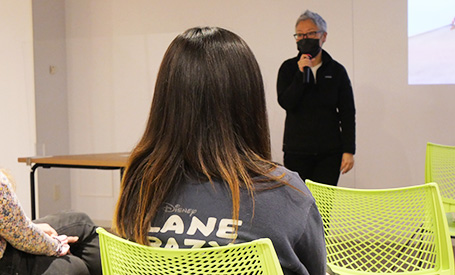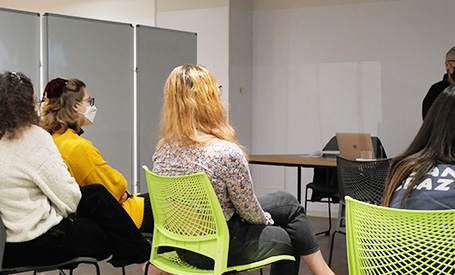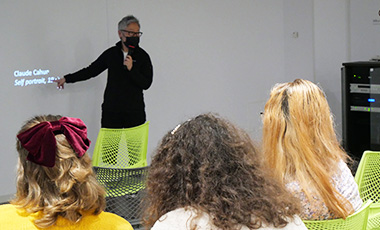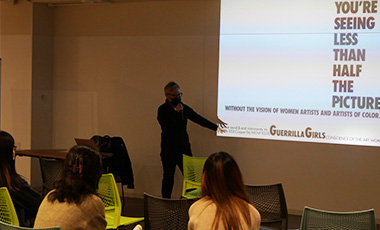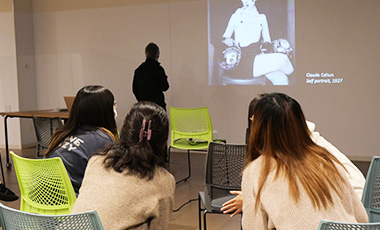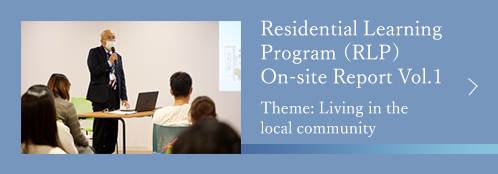 Residential Learning Program (RLP) On-site Report Vol.2
Residential Learning Program (RLP) On-site Report Vol.2
〜 Theme: LGBTQ and Art 〜
The theme of today’s RLP was “LGBTQ and Art.”
In the contemporary society that calls for tolerance to accept diversity,
it is important to learn about LGBTQ and
see things from that point of view.
Keishiryo Dormitory, where students
from different parts of the world with different racial,
gender and cultural backgrounds live together,
is an ideal environment to learn about such a perspective.
Students in attendance learned about the link
between art and society through the lecture and discussion,
and deepened their awareness of how they see LGBTQ
through the artworks introduced in the program.
Program starts
The speaker today was Associate Professor KANNO Yuka of Doshisha University Graduate School of Global Studies, who specializes in gender, sexuality and racial issues in cinema and contemporary art. Participated by many international students, today’s program was held bilingually in Japanese and English and in an interactive manner with the speaker often inviting students to give their opinions.
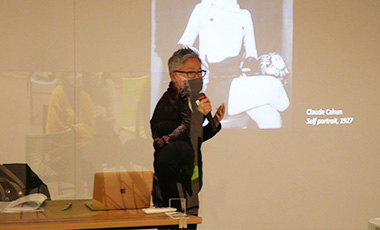
In conclusion
The LGBTQ artworks shown in this program made me become aware of how we have more biased view than we thought of the gender and sexuality of artists. Associate Professor Kanno said that seeing artworks with a bit of that awareness would give us an entirely different perspective. I believe that her words at the end of the program, “you can find representations of LGBTQ in films and novels as well, so think about that when you see or read them, it will be a very good exercise of thinking about sexuality and gender issues,” will remain in the audience as an important advice for reconsidering the stereotype of LGBTQ in their own minds. The program taught us a valuable perspective not only in our appreciation of art, but also in our consideration of people and matters around us.
